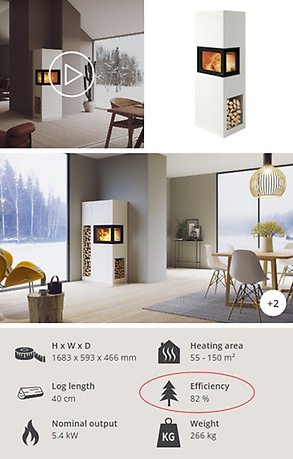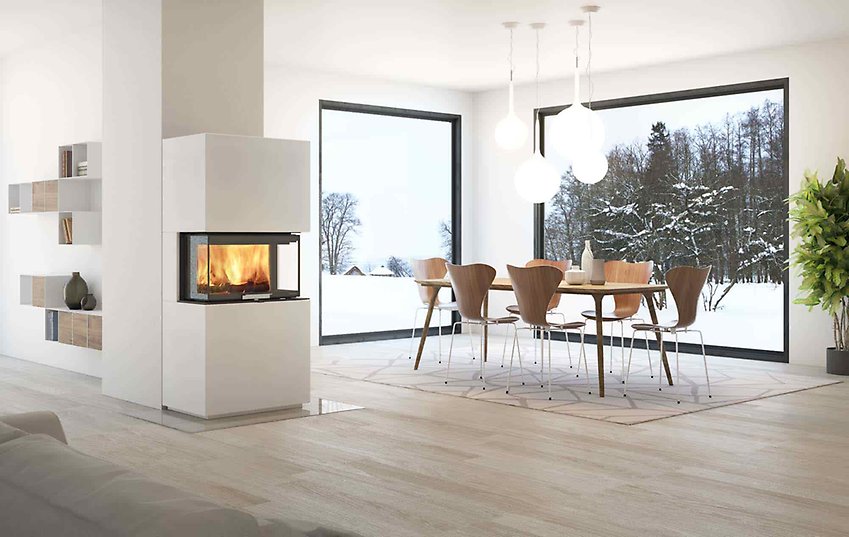Efficiency of fireplace and stove
The efficiency of a fireplace or stove refers to how efficiently the fireplace or stove converts fuel into heat. In our case, it relates to how much heat you can expect from a log of wood. It is typically expressed as a percentage and indicates the proportion converted into useful heat for heating the room. The difference indicates how much is lost through the chimney in the form of heat and unburned gases.
A high efficiency is desirable because it means that more of the energy from the wood is used to produce heat, and less is lost. Efficiency can be influenced by several factors, including design, combustion efficiency, insulation, and the quality of the wood.
All our fireplaces and stoves feature secondary combustion and are clean-burning. This means they have a dual combustion system that converts gases and particles into heat.
Example efficiency
On our product pages, you will see an indication for efficiency.
The example we have provided shows Nordpeis Canne, with an Efficiency: 82%.
This means that 83% of the energy from the fuel is converted into heat, while the remaining 17% is lost.
This applies at the nominal power level and will decrease/increase at significantly lower or higher power levels. These two figures must therefore be considered in relation to each other.


All our fireplaces are clean-burning and have high efficiency. Additionally, Monaco High has a high nominal heat output, making it suitable for large houses or living rooms. It features a large insert with a good view of the flames from three sides.

Similar to our fireplaces, our stoves are also clean-burning with high efficiency. Here you see Uno 1, a small wood stove with a pedestal, which fits into any home and has a low nominal heat output. It provides a good view of the flames.
Please note that
Choosing a unit with high efficiency and a nominal heat output tailored to your needs is important to maximize heating efficiency, reduce wood consumption, and minimize environmental impact.
If you have a stove from before 1998, it is likely not clean-burning and may have an efficiency as low as 50%. This means you would need to use much more wood to achieve the same heating effect. Additionally, you would often need to fire more frequently and for longer periods to compensate for the significant heat loss.

